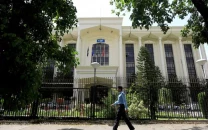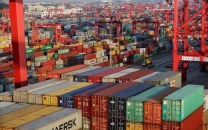Trade liberalisation with India divides motorcycle industry
Assemblers welcome the prospect of shorter supply chain; parts manufacturers afraid of the competition.

The prospect of trade liberalisation with India has divided the motorcycle industry in Pakistan: most of the assemblers seem in favour of the move while most of the parts and accessories manufacturers are opposed.
The motorcycle industry in Pakistan has been expanding at a rapid pace. Between the 90 assemblers and manufacturers in the country, they manufactured about 1.6 million motorcycles in 2011, a record high. Ten years ago, that number was barely above 100,000. Industry experts believe this figure may soon touch 2 million mark as demand in Pakistan continues to increase.
Many of the motorcycle assemblers believe that opening up to trade with India would help the local industry.
“The parts that we import from China through the sea routes take 60 days to reach our factories. The same consignment from India can take just 3 days through land route,” said Muhammad Sabir Shaikh, chairman of the Association of Pakistan Motorcycle Assemblers (APMA), adding that the cost of transportation from India was also lower.
Most of the assemblers in Pakistan import their parts from China, particularly from the south-eastern Chinese city of Chongqing, known as the motorcycle capital of the world. Yet despite the scale of Chongqing’s manufacturing base – the city produced 8.6 million motorcycles in 2007, more than all of India combined – the Indian industry can still supply parts to Pakistan in a shorter period of time, and for less money.
But shorter supply chains and lower input costs are not the only advantage that the assemblers see. India is also viewed as a large export market. For instance, Pakistan is the only country in the region that produces the smaller 70 cc motorcycle (most of the Indian manufacturers produce 100 cc or higher). That smaller, more economical model is likely to be a popular product in the Indian market.
There are also likely to be several synergies between the motorcycle industries in the two countries. Shaikh said he believes that, as collaboration across the border increases, Pakistani companies will learn from their Indian counterparts and add a greater variety of models to their manufacturing line-up.
Not all companies may benefit, however. Atlas Honda, the industry leader with an over 50% market share, would likely see at least some of its market share taken away by Indian motorcycles. The company aims to produce 650,000 units this year, and is edging closer to its target of 1 million units a year.
Parts manufacturers are also apprehensive about more liberalised trade with India. The Pakistan Association of Automotive Parts and Accessories Manufacturers (Paapam) has called upon the government to retain the protections the local industry currently enjoys in the form of high tariffs.
“We also support trade liberalisation with India, but giving blanket support to this idea is wrong because we also have to protect our growing industry,” stated Nabeel Hashmi, the chairman of Paapam. “We want the government to adopt a go-slow policy for the auto industry of the country so that our industry can develop itself over time and then go for full-fledged competition with India.”
The government, for its part, appears to be open to the concerns of the protectionists in the automobile industry. Before leaving for the next round of trade talks with India, Commerce Secretary Zafar Mahmood held a series of meetings with the automobile industry where he assured them of government support even after opening up to trade with India.
Demand for motorcycles in Pakistan is often seen as a reliable barometer of the health of the rural economy, since most of the motorcycles sold are in small towns and villages. Global food prices have almost doubled over the last six years, according to The Economist’s commodity price index, resulting in higher disposable income amongst many rural households.
Published in The Express Tribune, November 14th, 2011.



















COMMENTS
Comments are moderated and generally will be posted if they are on-topic and not abusive.
For more information, please see our Comments FAQ